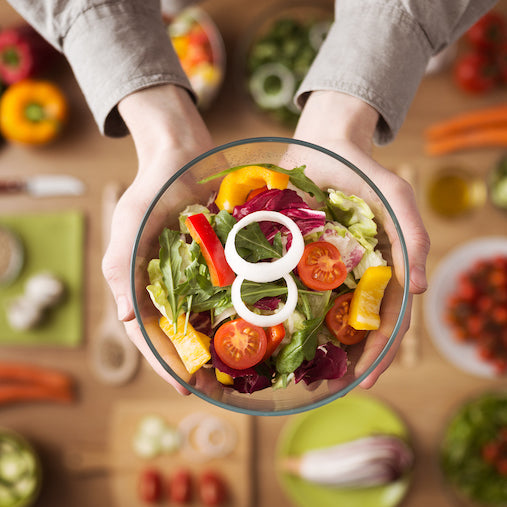Regardless of exactly why you chose to exclude meat and other animal products from your diet, being a vegetarian can come with quite a few challenges.
For most people, the chief concern has to do with protein intake. Since animal-based foods are generally seen as the primary source of protein, people often don't understand how to meet these needs as a vegetarian.
In truth, there are many plant-based foods that are full of protein and – by following a well-designed diet – meeting your protein needs really isn't that difficult.
To help you plan your dietary approach, here are five high-quality foods that can help you get protein in your diet as a vegetarian.

Powdered Peanut Butter – 6g per 1/8 cup serving
Somewhat famously, peanut butter is an excellent source of vegetarian protein. Unfortunately, it's also packed with calories – primarily from fats. This can make using peanut butter as your main source of protein problematic.
And then there's the matter of texture. The consistency of peanut butter, whether crunchy or smooth, generally limits the number of practical uses.
Powdered peanut butter, though, offers an interesting solution. As the name suggests, this source of peanuts is powdered which opens up a myraid of applications – including baking.
Most important, though, is the way that peanut butter is converted into a powder. Essentially, the fats are pressed out – greatly reducing the amount of both fat and total calories. The resulting product is a high-quality, complete protein powder that can easily be used in a number of ways. Also, it tastes like peanuts.
Quinoa – 8g per 1 cup serving
This ancient grain – which was once a staple food in South America – enjoyed a huge resurgence in popularity several years ago after a long stretch of obscurity.
Quinoa is a complete protein that can also be used in a variety of recipes Some people, however, struggle with the flavor of quinoa and have a hard time fitting the grain into their diet.
Also, when you do the numbers and compare it to some of the other sources on our list, quinoa isn't actually all that protein-dense – requiring a fairly large serving size to get a decent dose of the macro.

Seitan – 21g per 1/3 cup serving
Made from the oft-maligned wheat protein gluten, seitan is absolutely stuffed with protein. With its slightly chewy texture and savory flavor, it's also a pretty convincing meat substitute.
Unfortunately, seitan on it's own is not actually a complete protein since it's missing the amino acid lysine. Traditionally, though, seitan is cooked in soy sauce which fills in this nutritional gap. Then, of course, that's the fact that this most definitely is not a gluten-free food. It is, in fact, isolated gluten.
So, anyone who typically has to avoid the wheat protein would have to pass over this option.
Rice Protein Powder – 25g per ¼ cup serving
Although rice isn't typically thought of as a viable protein source, the grain actually does contain a fair amount of the sought-after macronutrient.
Rice protein powder, though, gives you a greater concentration of that protein in a more convenient form. Just like rice, however, rice protein powder is not a complete protein source since it's low in lysine. By eating a variety of foods throughout the day, however, you can easily complete that protein.
Pea Protein Powder – 27g per ¼ cup serving
Another vegetable that people tend to underestimate, the humble pea has an excellent source of protein. Particularly when it comes as a protein powder.
Again, though, pea protein powder is an incomplete protein. So, if you do decide to use this savory, adaptable powder remember to treat it as a supplement and not rely on it for your primary source of protein.










